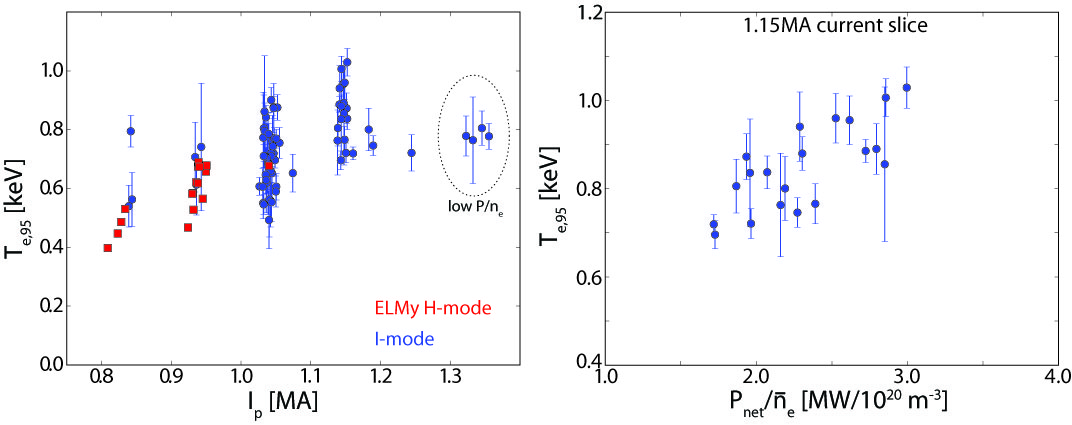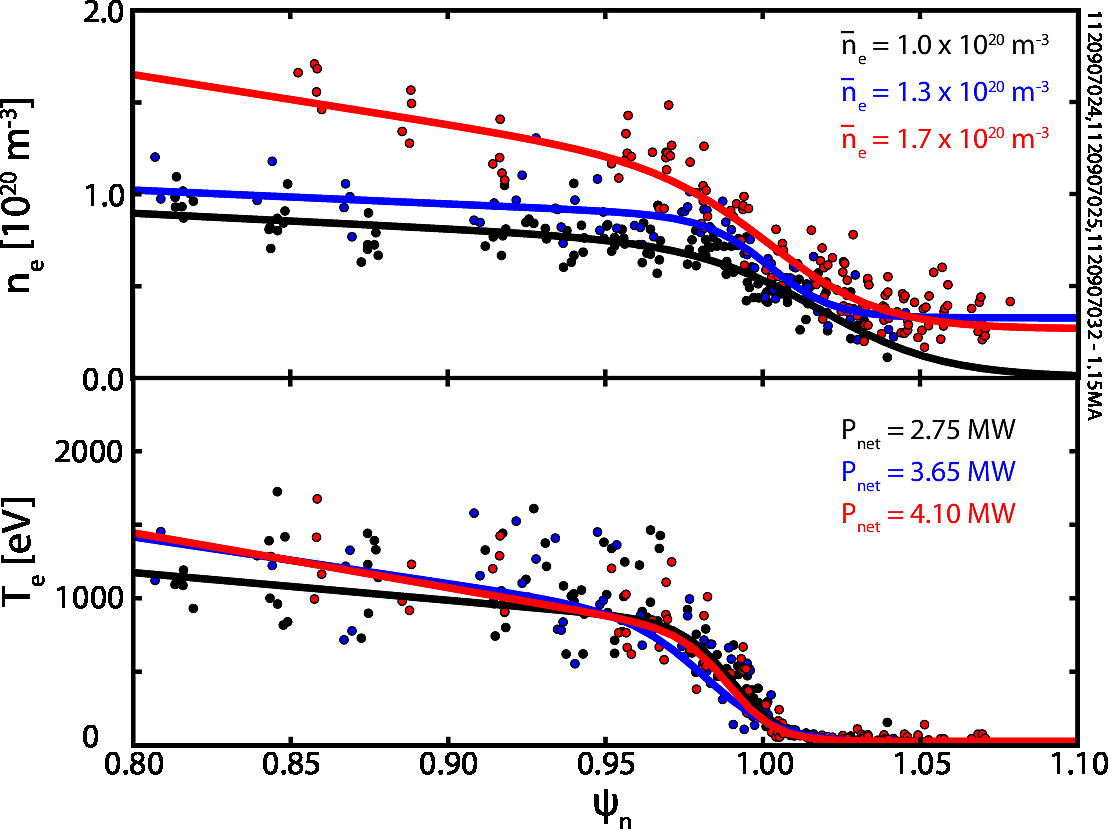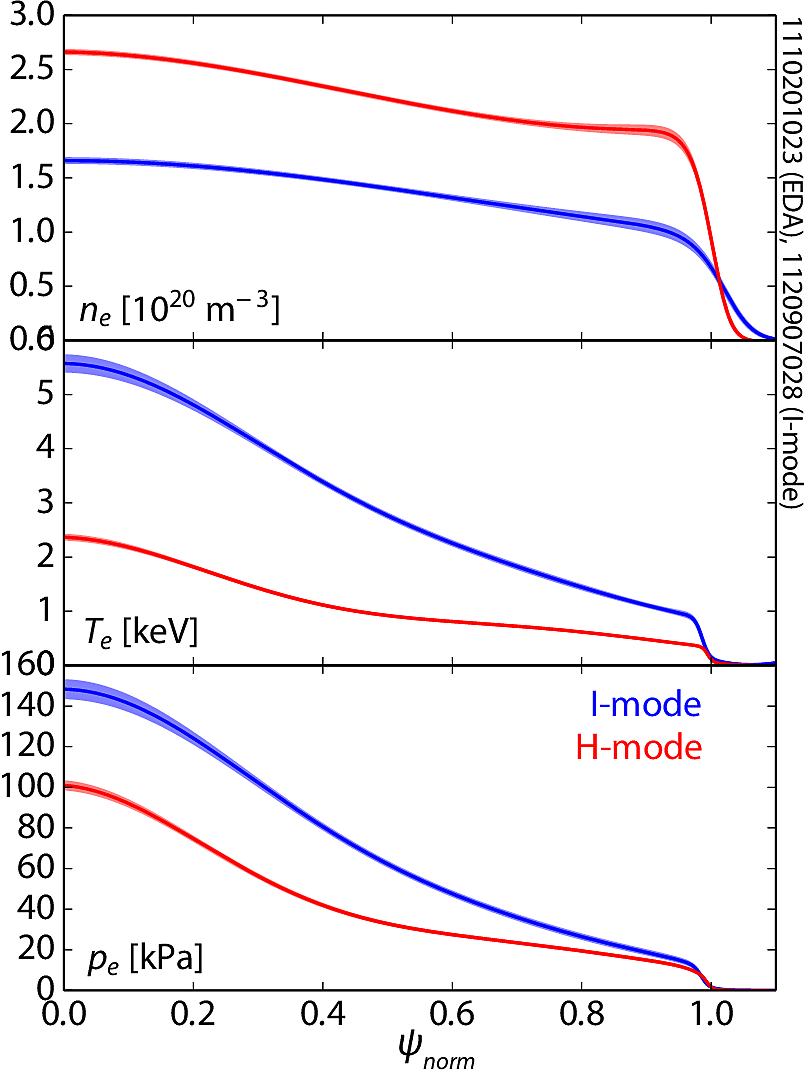John Walk
I-Mode Pedestal Structure (doctoral thesis)
John Walk
The I-mode is a promising new operating regime for tokamak fusion reactor designs. As a component of my thesis research, I developed the first comprehensive study of the pedestal structure in I-mode, using a series of dedicated experiments on MIT’s Alcator C-Mod tokamak. Understanding the response of the pedestal to engineering inputs, its impact on overall performance, and implications for stability against ELMs is critical to extrapolating the I-mode (which at present is still a not-entirely-understood experimental process most readily studied on C-Mod) to reliable operation on other tokamaks, and ultimately to reactor-scale devices.
As the I-mode pedestal is characterized (in part) by its H-mode-like temperature pedestal, that is a suitable place to begin. The I-mode pedestal temperature (which is directly tied to core temperatures and pressures, whence fusion power density) immediately is shown (a) to trend strongly with plasma current (consistent with H-mode behavior), and (b) to easily meet or exceed H-mode levels. At a given current, the pedestal temperature is set by the heating power - more specifically, the heating power per particle (equivalently, heating power normalized to the density) sets the pedestal temperature. This is notable, in that H-mode edge temperature profiles respond weakly to the heating power - in ELMy H-mode, for example, increased heating power simply increases the ELM frequency (driving increased heat loss to balance the input power).

In contrast to the temperature pedestal, the density profile in I-mode presents markedly different behavior from conventional H-modes. Unlike in ELMy H-mode, where the pedestal density is set by interplay with the temperature profile due to pressure-limiting MHD instabilities, the edge density in I-mode is set simply by the global density (in turn determined by overall plasma current, gas-puff fueling level, etc.). More importantly, the density is determined independently of the temperature profile - given sufficient power to maintain a steady level of power-per-particle, the density can be greatly increased (spanning nearly a factor of two in these experiments) with matched temperature profiles.

This independent control of edge density and temperature (rather than the profiles being set by inherent stability or transport limits) is highly beneficial for a reactor scenario, letting the operator dial in the desired edge properties. It also allows for easier operation on a reactor-scale device, accessing the I-mode at lower density and heating power levels, then stepping up matched increases in fueling and heating power to reach the target pressure.
##Impact on Global Performance
The pedestal structure of the I-mode is quite desirable for a reactor scenario – due to the strong response of the pedestal temperature to heating power, externally-applied heating power is an effective engineering control for core temperatures, and subsequently fusion reaction rates. Due to “profile stiffness” (a property in which higher temperatures allow higher stable temperature gradients in the core), the high pedestal temperature in I-mode supports significantly increased core temperatures compared to a comparable H-mode. Even at moderate densities, the high core temperatures supported in I-mode allow reaching significant core pressures and fusion reaction rates comparable to (or exceeding) H-mode, despite a relaxed pedestal pressure (which is beneficial for ELM stability).
